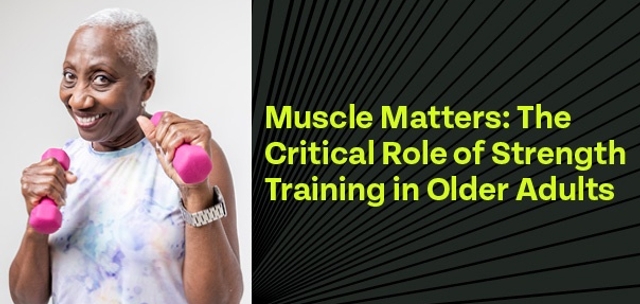
Miss the webinar? Click here to watch and earn 1 CEC.
- There has been recent articles and literature from groups of scientists that RED-S does not exist but is rather just a form of overtraining syndrome. Is there any update or clarification on this topic?
This is the subject of ongoing scientific discussion, and as such, a definitive answer cannot yet be provided. However, as highlighted in our presentation, there are challenges with measuring low energy availability (which is referred to as the core of REDs), and the symptoms associated with REDs are multifaceted. Therefore, practitioners should look out for a broad range of symptoms that athletes might be experiencing, and implement proactive strategies to ensure that health and performance are not compromised.
We would refer you to recent research articles for further reading:
Jeukendrup, A.E., Areta, J.L., Van Genechten, L. et al. Does Relative Energy Deficiency in Sport (REDs) Syndrome Exist?. Sports Med 54, 2793–2816 (2024).
Stellingwerff, Trent et al. “Overtraining Syndrome (OTS) and Relative Energy Deficiency in Sport (RED-S): Shared Pathways, Symptoms and Complexities.” Sports medicine (Auckland, N.Z.) vol. 51,11 (2021): 2251-2280.
Mountjoy M, Ackerman KE, Bailey DM, et al. 2023 International Olympic Committee’s (IOC) consensus statement on Relative Energy Deficiency in Sport (REDs). British Journal of Sports Medicine 2023;57:1073-1098.
- What is the cut-off for low energy availability in athletes?
The value of < 30 kcal/kg fat free mass/day is commonly utilized in research and practice as a cut-off value for LEA. This threshold was originally established in controlled studies involving female athletes and is associated with disruptions in metabolic, hormonal, and reproductive function. It is considered the point below which physiological impairments begin to occur due to insufficient energy remaining after exercise to support basic bodily functions. However, it should be noted that it is widely debated as to whether this threshold definitively indicates low energy availability. For example, some individuals may experience negative symptoms at higher energy availability levels, while others may not show signs until much below this threshold.
- Are there specific food sources (for example protein) to focus on during different phases of the menstrual cycle to get optimal energy availability?
Currently, there is no strong scientific evidence to suggest that female athletes should manipulate their dietary intake during different phases of the menstrual cycle to optimize
energy availability. Instead, the emphasis should be placed on consistently meeting daily energy and nutrient needs, regardless of menstrual cycle phase.
Key areas to focus on include:
Overall fueling: Ensure that female athletes are well-fueled before, during, and after training sessions to avoid periods of low energy availability (LEA).
Iron intake: Menstruation increases iron losses, and female athletes may also have reduced iron absorption compared to males. With up to 35% of female athletes experiencing iron deficiency, it’s important to monitor iron status and include iron-rich foods daily within the diet (e.g., red meat, leafy greens, legumes, fortified cereals).
Individual symptoms: Some female athletes may notice changes in appetite, cravings, or energy across their menstrual cycle. For these individuals, Registered Dietitians (RDs) may provide individualized support, but this should be done on a case-by-case basis.
To summarize, rather than focusing on phase-specific foods, female athletes should maintain a balanced, nutrient-dense diet that supports their training demands and helps to optimize their energy availability.
- Can obese athletes experience low energy availability if they are in deliberate energy deficit while in a training plan?
Yes, any athlete, including obese athletes, can experience low energy availability. Even if an athlete has excess fat mass (FM), their fat free mass (FFM) still requires a minimum level of energy for basic function. If energy intake isn’t sufficient after accounting for exercise energy expenditure, low energy availability can occur, regardless of overall body size. However, problematic low energy availability may only occur if this mismatch between energy intake and exercise energy expenditure exists over a long period of time.
- Would you have a link to the energy expenditure with balance calculation formula shown before or is it already in toolkit?
You can find the Energy Availability-Energy Balance method within the ‘Energy Availability’ section of the Female Athlete Toolkit. You can also read more about this method in the following research paper:
Tarnowski, Caroline A et al. “Measurement of Energy Intake Using the Principle of Energy Balance Overcomes a Critical Limitation in the Assessment of Energy Availability.” Sports medicine – open vol. 9,1 16. 22 Feb. 2023.
- Are there carbohydrate recommendations specific to females?
Currently, there are no carbohydrate recommendations that are specific to females. Guidelines are based on body mass, training duration and intensity, and performance goals. You can find the current carbohydrate recommendations within the ‘Carbohydrate’ section of the toolkit. It should however be noted that it is often reported across the literature, as well as in practice, that many female athletes struggle to achieve carbohydrate recommendations. This could be due to a number of reasons including:
- High consumption of low energy, nutrient dense carbohydrates
- Body weight and/or composition fears
- Substituting sports drinks with low calorie sweetened drinks during high-intensity and/or prolonged exercise
- Lack of education regarding the importance of carbohydrates
- Negative perception of carbohydrates on social media
- How can you adjust carbohydrate intake in athletes with diabetes?
Diabetic athletes must carefully manage their carbohydrate intake around exercise to optimize performance while minimizing the risk of hypoglycemia. Carbohydrate intake for diabetic athletes should be individualized to the athletes’ diabetes type, medication and training demands. Key strategies for managing carbohydrate intake in the context of exercise include:
- Carbohydrate quantity: Adjusting carbohydrate intake based on the energy demands of training to ensure sufficient fuel, while minimizing blood glucose fluctuations.
- Timing of intake: Strategically consuming carbohydrates before, during, and after exercise to support energy availability and recovery.
- Carbohydrate quality: Choosing appropriate types of carbohydrates considering their glycemic index, and how they interact with other macronutrients in a meal to promote stable blood glucose levels.
You can find more information here.
- If there are no sex-specific CHO guidelines, can the toolkit be used for males as well?
Yes, considering that there are currently no sex-specific carbohydrate recommendations, the daily carbohydrate recommendations listed within the Female Athlete Toolkit can also be used for male athletes.
- How do females’ preferred use of fat for energy utilization affect our daily needs for carbohydrates?
Even though females may preferentially use more fat for energy, this does not reduce the overall need for carbohydrates. The contribution of carbohydrate to energy metabolism increases as exercise intensity and duration increases. During high intensity endurance or sprint-type exercise, carbohydrates are the predominant energy source. The daily carbohydrate needs for female athletes should be aligned with their training demands.
The views expressed are those of the authors and do not necessarily reflect the position or policy of PepsiCo, Inc.


